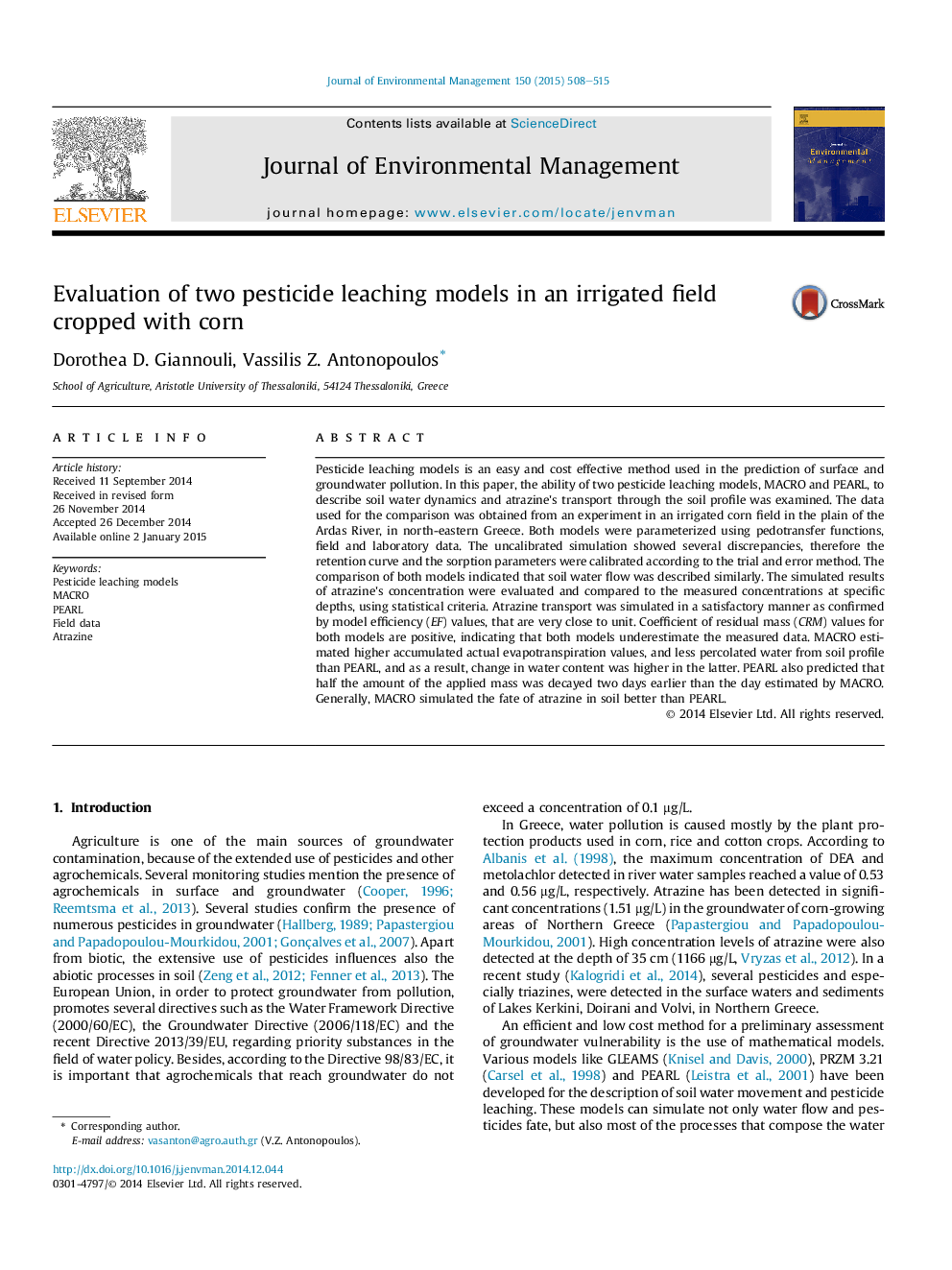| Article ID | Journal | Published Year | Pages | File Type |
|---|---|---|---|---|
| 7483064 | Journal of Environmental Management | 2015 | 8 Pages |
Abstract
Pesticide leaching models is an easy and cost effective method used in the prediction of surface and groundwater pollution. In this paper, the ability of two pesticide leaching models, MACRO and PEARL, to describe soil water dynamics and atrazine's transport through the soil profile was examined. The data used for the comparison was obtained from an experiment in an irrigated corn field in the plain of the Ardas River, in north-eastern Greece. Both models were parameterized using pedotransfer functions, field and laboratory data. The uncalibrated simulation showed several discrepancies, therefore the retention curve and the sorption parameters were calibrated according to the trial and error method. The comparison of both models indicated that soil water flow was described similarly. The simulated results of atrazine's concentration were evaluated and compared to the measured concentrations at specific depths, using statistical criteria. Atrazine transport was simulated in a satisfactory manner as confirmed by model efficiency (EF) values, that are very close to unit. Coefficient of residual mass (CRM) values for both models are positive, indicating that both models underestimate the measured data. MACRO estimated higher accumulated actual evapotranspiration values, and less percolated water from soil profile than PEARL, and as a result, change in water content was higher in the latter. PEARL also predicted that half the amount of the applied mass was decayed two days earlier than the day estimated by MACRO. Generally, MACRO simulated the fate of atrazine in soil better than PEARL.
Keywords
Related Topics
Physical Sciences and Engineering
Energy
Renewable Energy, Sustainability and the Environment
Authors
Dorothea D. Giannouli, Vassilis Z. Antonopoulos,
